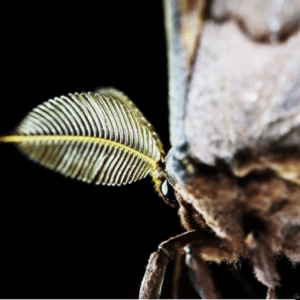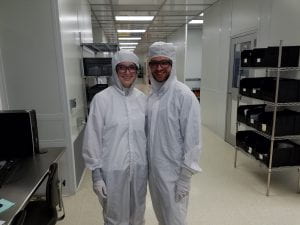 Moths don’t use techniques modern chemical sensors use to extract odors from the air yet they are able to sense pheromone particles in very low concentrations. Their odor grabbing abilities originate from the complex structure of their antennae; however, this unique anatomical structure has never been replicated to scale. Our lab along with collaboration from CNMS at Oak Ridge has been able to create a 1:1 scale antennae mimics that contains common structures our group found in the antennae. We did this by overcoming the unique fabrication challenges of the small scale and complex nature of the antennae by using nanoscale 3D printing. The comparative biology and fabrication techniques from this study may inspire ideas for fabricating improved filters and chemical sensors.
Moths don’t use techniques modern chemical sensors use to extract odors from the air yet they are able to sense pheromone particles in very low concentrations. Their odor grabbing abilities originate from the complex structure of their antennae; however, this unique anatomical structure has never been replicated to scale. Our lab along with collaboration from CNMS at Oak Ridge has been able to create a 1:1 scale antennae mimics that contains common structures our group found in the antennae. We did this by overcoming the unique fabrication challenges of the small scale and complex nature of the antennae by using nanoscale 3D printing. The comparative biology and fabrication techniques from this study may inspire ideas for fabricating improved filters and chemical sensors.
The antennae was printed on the tip of a needle which posed even more challenges due to the curved printing surface. This challenge was overcome by creating cubed “grippers” where the resin could cure into the surface features of the needle and remain secure. Creating 3D printed antennae lets us modify some of the natural antennae’s structure in a way that allows us to isolate the properties that makes a moth antennae such a great sensor.

Of course, another perk of the fabrication process is that my lab mate and I get to dress up as nerdy space people in order to enter the clean-room:
For more information please see the published paper here
This work has also been highlighted on a few different media sources including 3D Printing Industry and Microfabricator

